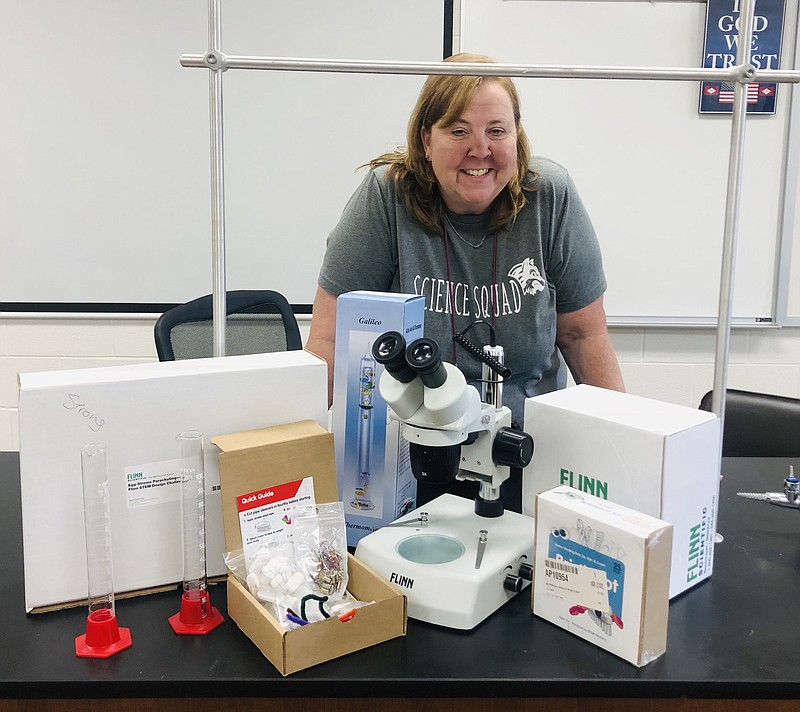PEARCY -- Lynn Strong, a science teacher at Lake Hamilton Middle School, was recently awarded a $6,000 grant from the USDA Future Scientists program, part of which is being used to create an outdoor classroom.
According to a news release, $3,000 of the grant is for Strong's classroom, and the other $3,000 is to create a butterfly garden to be used as an outdoor classroom at the middle school.
"The construction of the butterfly garden/outdoor classroom is already underway. Greg Mundy's high school construction fundamentals class is responsible for completing a materials list and designing/building the garden boxes," the release said.
"It is really cool. I really like it; $6,000 is a lot of money. It took me a little while to think about all the stuff that I wanted to do with it," Strong said.
Strong said she has had some good teachers helping her with what she wants to do with the stipend. A teacher is outlining the garden she wants to do.
Video not playing? Click here https://www.youtube.com/embed/bXMS75eZtW0
"It's nice when you're able to help the kids and when the teachers get excited about it, then you know that it's going to work," Strong said.
She said she feels she got the grant because Craig Wilson, Future Scientists Program director, liked her dedication.
"All too often, the good things that happen in schools go unnoticed. It is teachers like these who exemplify the best of the profession," Wilson said in a news release from Texas A&M University.
"They work tirelessly on behalf of their students, and it is an honor for the USDA/ARS and the Center for Mathematics and Science Education to be able to help them and to use seed money to grow the next generation of dynamic future scientists," he said in the release.
Wilson could not travel to schools due to COVID-19, so Texas A&M let him use his travel money to give stipends to teachers.
Strong had been teaching the future scientists program since 2003 at three different schools, LHMS being the third school, and has been ordering corn earworms as part of the program.
"I use these to get the kids excited about science because they get little containers of a couple of eggs that grow into caterpillars," Strong said.
Strong met Wilson in West Memphis at a workshop.
"The Future Scientists Program is designed to assist USDA/ARS reach out to communities and schools with hands-on, inquiry-based activities that link them with USDA/ARS scientists, laboratory sites, and current agricultural science research," the USDA website said.
"The goal is to help science teachers to become more effective and able to enthuse their students about science through engaging them in actual research and thereby raising both their test scores and interest in the sciences," it said.
"It puts the excitement back into the learning process by reverting to a hands-on, inquiry-based approach," the USDA website said.
